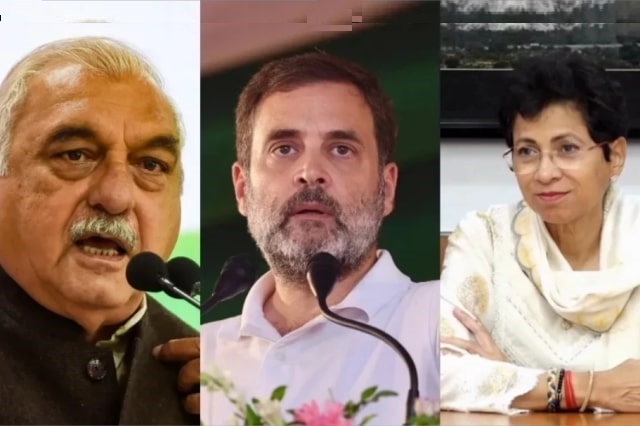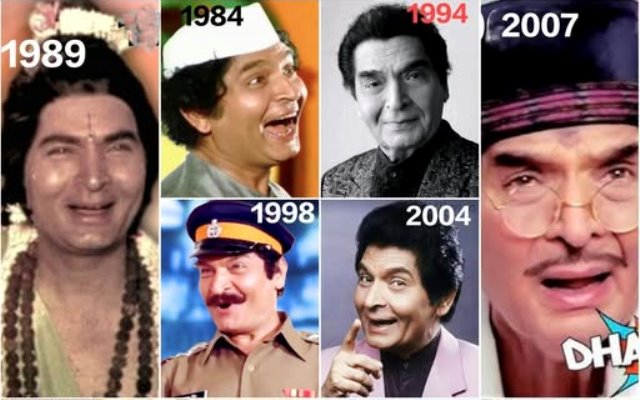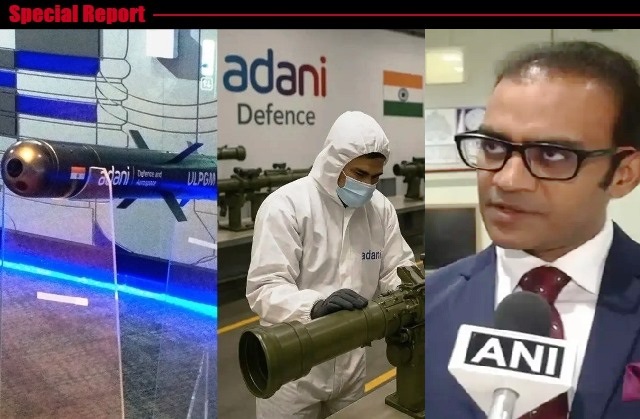
How Long Will The Congress Party Remain On A Learning Curve?
Last week, the Bharatiya Janata Party (BJP) won the assembly elections in the northern state of Haryana for the third time in a row, a hat trick that no political party has ever achieved in that state since it was carved out of Punjab in 1966. The win was all the more impressive as it came after numerous exit polls predicted that the Congress would sweep the state’s polls and that the BJP, which had been ruling in the state since 2014, would be decimated.
Exit polls were not the only inaccurate forecasters. Almost every media publication predicted the same thing. Seasoned political journalists ostensibly spent weeks scouring the state to gauge the pulse of voters, analyse caste dynamics, and crunch oodles of numbers, to come to the same conclusion: the Congress was going to trounce the BJP.
They were all horribly wrong. As it happened, the BJP swept the state’s polls: the party won 48 of the 90 seats in the state’s assembly. That number was higher than the seats they had in their two previous terms.
Three questions emerge after the BJP’s win. How did the exit polls, many of them done by reputed organisations and psephologists get it so wrong? Why did the media, whose many representatives take pride in their acumen for political trend-spotting, get egg all over their face? And, finally, why couldn’t the Congress Party oust the BJP, whose government in the state was beset by a host of anti-incumbency factors?
Answers to the first two questions are easy to find. Exit polls in India have become a joke. While it has become a mushrooming business (you can lose count of how many exit polls there are), their credibility is mud. Before this year’s Lok Sabha parliamentary elections, nearly every exit poll predicted an overwhelming majority for the BJP; it didn’t happen. Exit polls in India now have no more than a very low-level comedic value.
As for the Indian media, it too has become a sort of unimportant sideshow. Publications and their journalists have become so removed from reality that what they publish or broadcast is of no consequence. Journalistic standards have deteriorated to levels that make the mainstream media irrelevant and, frankly, a waste of time for anyone looking for political news and analysis.
It is the third question, however, which needs some attention. What happened to the Congress? In this year’s Lok Sabha elections, the Congress, along with an alliance of several Opposition parties that it led, scored impressive wins: it checked the BJP from getting a majority of the 543 Lok Sabha seats (the BJP got only 240 and could form the government only with the assistance from allies); it improved its own tally (the Congress won 99 seats, 47 more than in 2019); and the image and public perception of its leaders, particularly Rahul Gandhi, improved dramatically.
The Lok Sabha elections gave it a momentum, a force that many believed it could ride on and use to its advantage in state elections such as the one in Haryana. Yet it couldn’t do that.
The problem with the Congress is that although it has been decimated in much of India (it has less than 100 seats in Lok Sabha; and of the 28 states and 8 Union Territories, only three states have Congress governments), its leadership still has the mindset of a Grand Old Party, an anachronistic, and incongruously unrealistic self-worth that is ludicrous. It is true that since 1947, the Congress dominated Indian politics for 50 years but to compare its present self to that era would be like living in the past.
So hubris was one of the main things that did it in. The Haryana elections, it thought, would be a cakewalk. Largely an agricultural state, Haryana’s farmers were displeased with the BJP-led Centre’s attempt to amend farm laws. Many of Haryana’s farmers are jats, a community that is influential in the state, and their ire against the BJP was something the Congress appeared to count on. In recent years, there was also resentment over the way the Centre had responded to widespread protest by wrestlers and other sportsmen, which the state is reputed for, against harassment, mistreatment, and other grievances.
These and other related factors, the Congress felt, would help it to oust the incumbent BJP government and ensure its own victory in the elections.
The reason why that didn’t happen is because the Congress has not learnt how to fight elections the way the BJP does. The BJP, which is in its third term at the Centre, and rules in 17 Indian states and UTs, is, of course, a political party but it is also a massive, fine-honed, election winning machinery of a size, scale and impact that can make the Congress, a 139-year-old party, look like a puny newbie.
Consider the elections in Haryana and the forces that were in play.
There has been much speculation about how there might be a growing rift between the BJP and its ideological mothership, the Rashtriya Swayamsevak Sangh (RSS). Yet, before tha Haryana elections, the RSS is believed to have mobilised more that 10,000 grassroots-level workers who worked assiduously on what analysts call “social engineering”. It is true that Haryana has a large component of jats but among voters, they account for only around 25%. The rest is made up of other backward castes, and communities such as Punjabi khatris. Weeks and months before the elections, BJP and RSS activists worked among these communities to mobilise their support.
ALSO READ: Youth, Jobs And Disenchantment In India
In fact, the BJP prepared early for the elections. In March this year, even before the Lok Sabha polls, the party replaced the longtime upper caste chief minister Manohar Lal Khattar (a Kshatriya) with Nayab Singh Saini, a member of a backward caste community.
The depth of BJP’s electoral strategy contrasts sharply with the shallowness of the Congress’. Instead of forging a long-term strategy in the contest for Haryana, it gave in to internal squabbles. Factions led by influential Congress leaders, such as Kumar Selja, were sidelined by the Congress’ state party leadership, which is dominated by former chief minister Bhupinder Singh Hooda and his family.
The Congress central leadership depended so much on the Hoodas that national leaders from the party, including Rahul Gandhi, chose not to campaign as actively as they ought to have in the state. This year’s Lok Sabha elections had imparted a much-needed boost to Gandhi (who at 54 is inexplicably still considered a young leader by his party’s veterans) that he could have leveraged to garner support for the Congress in Haryana. Yet he chose to campaign sparingly, perhaps for just a week.
During the Lok Sabha election campaigning, his sister, Priyanka Gandhi, 52, had demonstrated her political charisma, maturity and ability to influence voters. She too was conspicuous by her absence in her party’s campaign in a state where the patriarchy dominates and where she could be an impactful role model for women voters.
Indeed, many Congress candidates were upset that party leaders did not visit their constituencies to support their campaigns.
Incredible as it might seem, the Congress (to re-emphasise, it is a party that has a mere 99 seats in the Lok Sabha and is a faint shadow of what it may have been before 2014) was overconfident, cocky, and excessively sure of itself–all mistakes that newbies make when they “think” they have learnt a lesson well.
The truth is that the Congress is still on a learning curve. And that learning curve seems to be steep and long. Its leaders, such as Rahul Gandhi (let us remind ourselves that he joined politics 20 years ago), are still making amateur-level mistakes such as under-estimating their opponents with hubris rather than wisdom guiding them.
After the BJP in this year’s general elections won only 240 seats, which is less than half of the total Lok Sabha seats, Prime Minister Narendra Modi pointed out that his party’s main rival, the Congress’ cumulative tally (it won 44 seats in 2014, 52 in 2019, and 99 in 2024) of the past three Lok Sabha elections was 195, which is lower than the seats the BJP won this year.
While they continue on their learning curve, Gandhi and his party should perhaps add a bit of elementary math to the syllabus.



